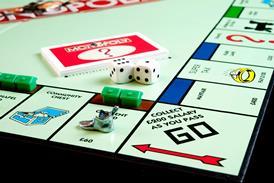The volume of TV and film content being made available with High Dynamic Range (HDR) is expected to increase significantly in the coming months with the emphasis on HD back catalogues as well as original Ultra High Definition (UHD) programming.

The technology required to upscale or convert content originally shot in standard dynamic range (SDR) to HDR is now being incorporated into production, distribution and display equipment, allowing broadcasters to re-master archive HD programming for future distribution.
UHD sports channels such as BT Sport, which produced live coverage of the Champions League final in HDR, are likely to implement HDR first, but ABI Research expects HD HDR channels to begin airing in 2018.
“We would expect all the content on these channels to be delivered in HDR to ensure TVs don’t have to switch modes, which can result in visual glitches,” said ABI managing director and vice president Sam Rosen. “This can be achieved through colour up-sampling,” he added.
Some of the latest 4K TVs from Sony, Samsung and LG support such conversion. Technicolor has demonstrated up-sampling of sports content, as well as commercials, to show that many of the benefits of HDR can be achieved even with legacy content, to create HDR channels.
At the same time, French audiovisual lab B-com says it is in discussions with various manufacturers about integrating its conversion technology into cameras, encoders, switchers and TV sets. Harmonic, Embrionix and Intel have already demonstrated it and B-com hopes to have commercial agreements signed by IBC.
According to Nicolas Dallery, B-com marketing and sales director, “Tier 1 European broadcasters” are currently testing it. “Our solution deals with this transition period where many broadcasters are not willing to invest in new UHD HDR equipment because they only invested in HD a few years ago. They don’t have the capex to afford another huge investment. Our solution deals with legacy content and legacy equipment.”
B-com’s technology, which is compatible with the HDR standards Perceptual Quantizer (PQ) and Hybrid Log-Gamma (HLG), works in real-time for live production where HD cameras can be upscaled to HDR alongside UHD HDR feeds.
ABI predicts that around 60% of TV households in Western Europe will have HDR-capable TV sets by 2020. HDR TV shipments – including HD HDR sets – will reach 245 million units globally in 2022, it adds.





























No comments yet